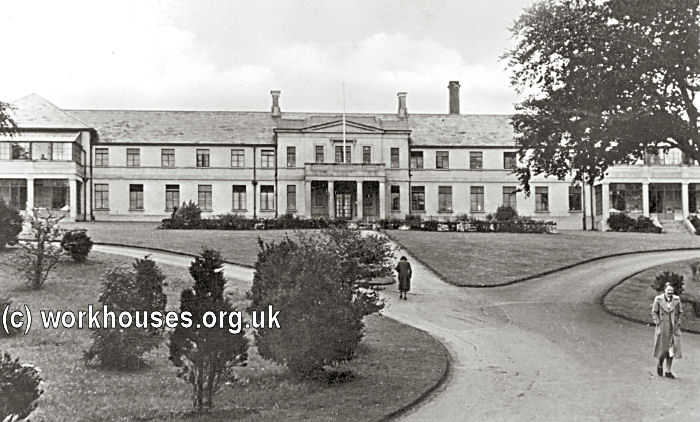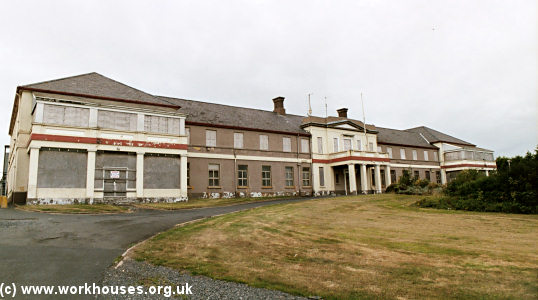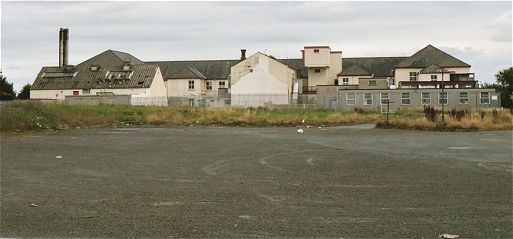Banbridge, Co. Down
Banbridge Poor Law Union was formally declared on the 22nd February 1839 and covered an area of 195 square miles. Its operation was overseen by an elected Board of Guardians, 29 in number, representing its 23 electoral divisions as listed below (figures in brackets indicate numbers of Guardians if more than one):
Co. Down:
Annaclone, Ardtanagh, Balloolymore, Ballybrick, Ballyward, Banbridge (3), Crosgar, Dromore (2), Garvaghy, Glaskermore, Leitrim, Loughbrickland, Magerally (2), Moneyslane, Quilly, Scarva, Skeagh, Tirkelly, Tullylish (2).
Co. Aramgh: Ballyshiel, Mullaghbrack, Mullahead, Tanderagee (2).
The Board also included 9 ex-officio Guardians, making a total of 38. The Guardians met each week on Tuesday.
The population falling within the Union at the 1831 census had been 81,780 with divisions ranging in size from Crosgar (population 2,046) to Banbridge itself (6,662).
The new Banbridge Union workhouse was erected in 1840-1 on a five-acre site at the west of Banbridge. Designed by the Poor Law Commissioners' architect George Wilkinson, the building was based on one of his standard plans to accommodate 800 inmates. Its construction cost £6,300 plus £1,280 for fittings etc. The workhouse was declared fit for the reception of paupers on 14th June 1841 and admitted its first inmates on 22nd June. The workhouse location and layout are shown on the 1931 map below.

Banbridge workhouse site, 1931.
The buildings followed Wilkinson's typical layout. An entrance and administrative block at the south-east contained a porter's room and waiting room at the centre with the Guardians' board room on the first floor above. Wings were added at each side, probably used as children's accommodation and schoolrooms.
The main accommodation block had the Master's quarters at the centre, with male and female wings to each side. At the rear, a range of single-storey utility rooms such as bakehouse and washhouse connected through to the infirmary and idiots' wards via a central spine containing the chapel and dining-hall.
During the famine in the mid-1840s, sleeping galleries were erected to accommodate an additional 120 inmates. A 48-bed ever hospital was erected at the north-west of the site.
At the 1901 census, the population of the Union was 42,454 with 184 inmates in the workhouse.
In 1932, the former workhouse became the Banbridge District Hospital. The entrance block was remodeled and the other buildings were incorporated into the hospital complex.

Banbridge Hospital, aerial view from the south, date unknown.
© Peter Higginbotham.

Banbridge Hospital, date unknown.
© Peter Higginbotham.
The hospital closed in around 2003 and the buildings subsequently demolished.

Banbridge former workhouse main block from the south, 2003.
© Peter Higginbotham.

Banbridge former workhouse main block from the north-west, 2003.
© Peter Higginbotham.
Records
Note: many repositories impose a closure period of up to 100 years for records identifying individuals. Before travelling a long distance, always check that the records you want to consult will be available.
- Public Record Office of Northern Ireland, 2 Titanic Boulevard, Titanic Quarter, Belfast BT3 9HQ. Holdings include: Guardians' minute books (1839-1943); Indoor relief lists (1930-46); Vaccination Registers (1864-1936); etc.
Bibliography
- The Workhouses of Ulster by Michael H Gould, 1983.
- The Workhouses of Ireland by John O'Connor (Anvil Books, 1995)
Links
- None.
Unless otherwise indicated, this page () is copyright Peter Higginbotham. Contents may not be reproduced without permission.


